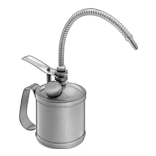Filter by
System of Measurement
OD
ID
Length
For Load Direction
Dynamic Radial Load Capacity
Plain Bearing Type
Axle Shape
Bearing Construction
Lubrication
Cage Material
DFARS Specialty Metals
Power Transmission
Fabricating and Machining
Material Handling
Raw Materials





































